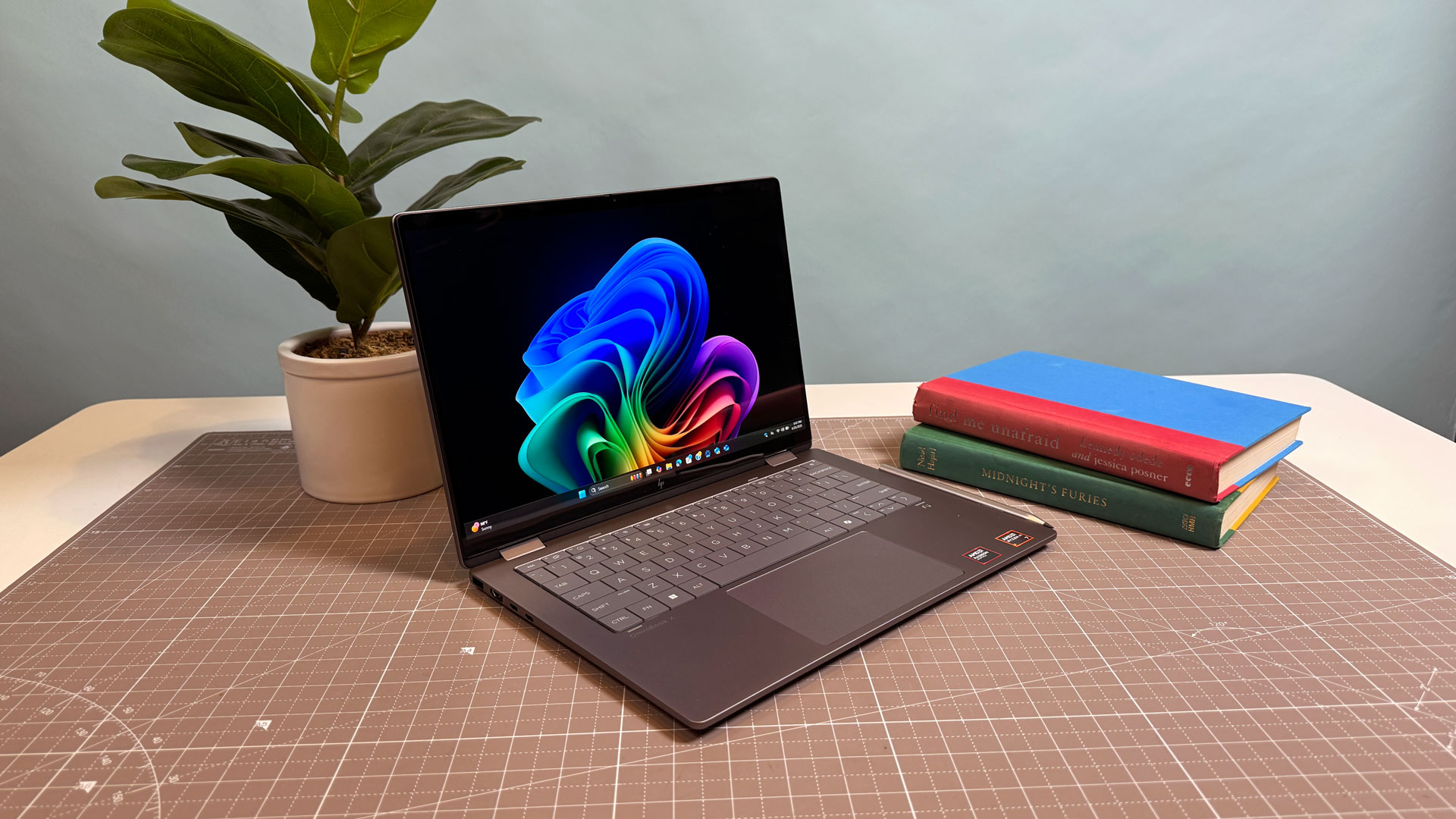Microsoft adds telemetry to monitor Windows 11 sluggishness in latest beta, dev builds — logs reportedly only sent when users submit feedback
Microsoft is taking customer feedback more seriously regarding system performance.

Microsoft seems to be taking Windows 11's performance more seriously, particularly feedback regarding the operating system's responsiveness. The company has introduced new telemetry that logs system sluggishness in preview builds of Windows. According to a blog post, Microsoft has incorporated new telemetry into the latest dev and beta builds of Windows 11 that monitors and records OS sluggishness. Windows 11 25H2 will also reportedly have the feature built in.
Windows 11's new sluggishness telemetry will automatically detect performance hiccups and log them to the %systemRoot%\Temp\DiagOutputDir\Whesvc folder. The logs are designed specifically for the Feedback Hub, and will be included when users submit feedback within the app regarding slowness/performance-related problems within Windows 11. The new telemetry changes should help Microsoft track down performance-related issues and provide accelerated updates featuring performance improvements for Windows 11.
Of course, from Microsoft's perspective, the company has been focusing on improving Windows 11's performance since the operating system came out. In 2021, Microsoft detailed how Windows 11 was faster than Windows 10, featuring a number of under-the-hood changes to make the OS more snappy. One of these features included an improved resource management system that gave foreground functions greater priority compared to prior versions of Windows.
However, despite these changes, Windows 11's performance improvements have been controversial, even if Microsoft's optimizations are legitimate. A quick Google search on the topic reveals a number of forum posts, articles, reports, and more complaining about performance issues in Windows 11, ranging from gaming performance issues to general sluggishness surrounding Windows 11's UI.
Not helping matters is Microsoft's latest attempt to tell users that Windows 11 is over twice as fast as Windows 10, using different hardware to compare each operating system. Its latest attempt used the Geekbench 6 multi-core benchmark to test Windows 10 PCs sporting Intel 6th - 10th Gen Core i-series processors against Windows 11 PCs sporting significantly newer 12th and 13th Gen Core i-series processors.
Get Tom's Hardware's best news and in-depth reviews, straight to your inbox.

Aaron Klotz is a contributing writer for Tom’s Hardware, covering news related to computer hardware such as CPUs, and graphics cards.
-
Alvar "Miles" Udell One of the biggest things Microsoft could do is ditch the monthly cumulative updates and go back to the "One issue, one patch" system of Windows 7 (prior to the change) and earlier, with every annual or semi annual update acting as a full update rollup, similar to the Update Rollup or service packs of generations prior. It may take initial setups a little longer, but the ability to easily troubleshoot and remove only issue causing updates instead of delaying installing everything is a win for both consumers and developers.Reply
The biggest thing, of course, is to let people strip down the OS of everything non critical the way Windows used to be, because update for feature A which you may not even use may cause issue with feature B that you do. Tis why I think Windows 2000 was and is still peak Windows design. -
Dr3ams Replylogs reportedly only sent when users submit feedback
If you believe that, then I have some lakeside property on the moon I'd like to sell you. -
mikeebb Probably useless anecdata, but I have (edit: Windows 11 in) a 10th gen i5-10400F in a desktop and a 11th gen i7 in a Lenovo laptop. i5 has 16G RAM and all (except one NVME stick used mainly for Linux dual-boot) standard SATA-3 6GB/s SSD boot and spinning rust data disks. The i7 has 8G RAM and a 1/2-GB NVME SSD. Once Windows is selected from the GRUB menu, the desktop starts up seemingly quicker than the laptop, with both set to avoid "fast shutdown" which really isn't. Hard to get firm, repeatable timings though; they're close.Reply
One other issue affecting real-world (not just boot to desktop) timing is "sysmain." In the laptop, it (now disabled, and startup works much better) would tie things up with disk access and enough CPU drain to run the fan up to hurricane, leading to kind of funky response to other apps for a couple of minutes. The desktop, which is an upgrade from Windows 10 (years ago) not a clean install, doesn't have that and is ready to use once logged in. If you have a SSD boot disk, even a plain-SATA model like in my desktop, you don't need sysmain (once known as "Superfetch" in the dark ages).
As for updates, why not go the Linux route and post individual updates whenever they're ready, for you to review and choose a good time (if ever) to apply?
Edit2: more specific SATA description -
USAFRet What part of "beta tester" is unclear?Reply
This is not (yet, if ever) in the prod release. -
Alvar "Miles" Udell ReplyUSAFRet said:What part of "beta tester" is unclear?
This is not (yet, if ever) in the prod release.
Honestly I'm surprised this hasn't always been a thing for Windows Insiders, but perhaps that's why so many, sometimes major, bugs make it though the Insider program and into the general release, not enough telemetry. -
sjkpublic More telemetry? Huh? They already have a bunch of telemetry stuff going on. Just more data for there AI.Reply -
ezst036 Reply
Telemetry is this loaded word that is essentially a double edged sword. Tech journalists have overwhelmingly failed readers by not erecting a wall of separation between telemetry for statistical software quality and telemetry for adware. Realistically the journalists ought to be inventing a new word for the deceitful data theft stuff.sjkpublic said:More telemetry? Huh? They already have a bunch of telemetry stuff going on. Just more data for there AI.
Microsoft trying to streamline bug zapping/performance measuring is not a bad thing. (1)
Conversely,
Microsoft trying to siphon your data so that they can greedily target you for more accurate advertising meaning they can charge an advertiser more money is an entirely bad thing. (2) And it something they are flat guilty of. If journalists would do a better job of never calling this telemetry we could stop fearing the first one. It may be a bit rosy glasses to call #1 innocent, but its not rooted in the classical one-sided greed found in the adware model. When Microsoft makes your software more performant or gets rid of bugs you do obviously reap the benefit of it.
Google started this or at least became the modern mainstream king of the adware model. Microsoft "merely" followed Google's adware model within Android and copied it thus turning their offering into Windows 11 Advertising Edition. -
Aurn Well, I hope you’ll be able to disable it ; by default, Windows already does a surprising amount of logging, which isn’t very good for SSDsReply -
abufrejoval Windows' ever increasing desire to phone home ever more exploitable insights into user behavior and desires is the most likely cause, so that's sure to fix it all.Reply -
NightHawkRMX Adding telemetry to determine why Windows is slow seems counterintuitive. A main part of the reason why Windows is so slow sometimes is due to telemetry. If you forcefully disable the telemetry stuff it becomes noticably quicker on slower systems.Reply